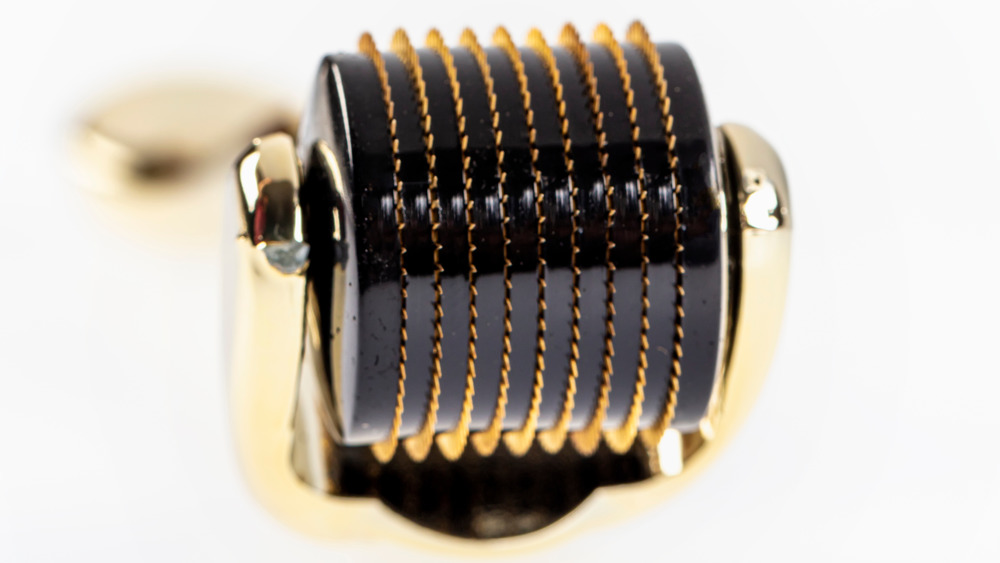When You Dermaroll Your Scalp, This Is What Happens
If you've been keeping up with the skincare trends of recent years, you're likely familiar with dermarolling. Used for everything from facial rejuvenation to reducing acne scarring, the technique involves rolling tiny needles across the skin. The dermaroller tool "creates tiny pricks around the skin and gives enough space in between so the wound healing response takes over. You grow new skin," aesthetician Marie Angelica tells Elle. It might sound a little scary, but the needles are very small and a numbing cream is also applied to help with any pain.
Because of its revitalizing properties, it makes sense why many are now using scalp dermarolling to aid with hair loss and regrowth. "Just like the skin on our face, the scalp also loses collagen as we age, resulting in slow hair growth and dormant hair follicles," Natasha Jay, founder of Pump Haircare, explains to The Zoe Report. As collagen production slows, our hair follicles simply become less supported, leading to less growth and more fallout. Dermarolling, however, has the ability to stimulate the scalp and allow for strong, healthy hair to grow.
How dermarolling stimulates hair growth
It's thought that the reason dermarolling, also called microneedling, is so effective is because it stimulates new stem cell growth. This theory was explored in a 2012 blind study of alopecia patients. Researchers stated that after just 12 weeks of treatment, "82 percent of patients reported more than 50 percent improvement." "Microneedling is a safe and a promising tool in hair stimulation and also is useful to treat hair loss," the study found.
"When rolled over the scalp or hairline, it creates tiny punctures that can make it easier for the medicinal qualities of topicals and oils to reach the hair follicles," Naturally Curly's Stacey Biro explains. "Think of it like aerating a lawn. Doing so helps nutrients, hydration, and sunlight reach the roots, so that healthier grass can grow. Likewise, using a derma roller with topicals and oils can help them to be absorbed properly."
While you can use a dermaroller at home, it's recommended to see a professional for the best results. After the procedure (which typically takes around ten minutes), you may experience pain, swelling, or bruising, though most side effects clear up within five days. Because the needles inflict small wounds into the scalp, infection is always a possibility. This is why it's so important to keep the area clean and follow the aftercare instructions (via Healthline).

